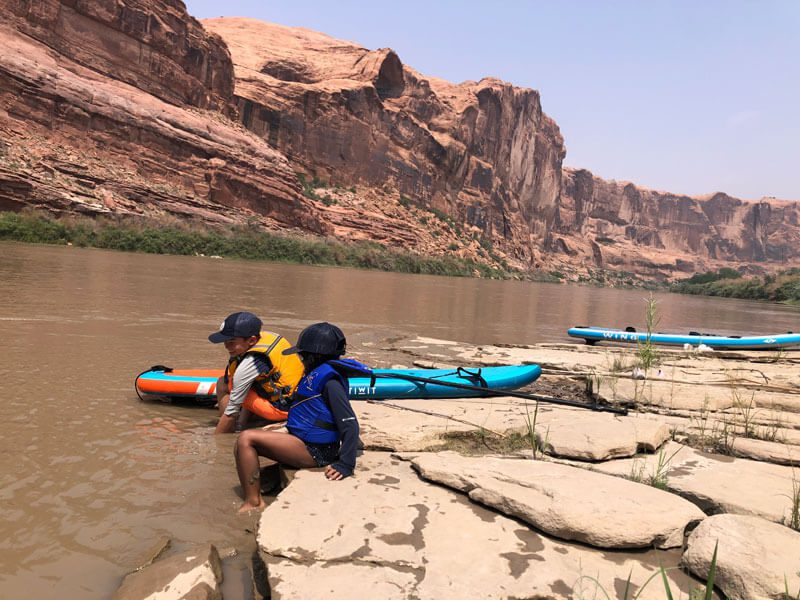
Last summer I took a road trip with my family traveling from Moab, UT to Columbia Falls, MT visiting five national parks. Our bags were packed and my fly fishing rods and gear were ready for any adventures I could find. Over the last 4 years I’ve been fly fishing a reasonable amount from my inflatable standup-paddle (SUP) board during the summer months, so it was inevitable at least one SUP was packed on our trip. A SUP board is just an oversized yet packable surfboard that rides high on the water and serves as an exceptionally stable platform for casting a fly rod on ponds and lakes. Naturally a SUP has a much larger surface area than other conventional inflatable watercraft used by fly anglers, such as a float tube. As such, fly fishing from a SUP raises a few more concerns about spreading aquatic invasive species (AIS) between frequented aquatic ecosystems.
In Oregon, as of 2020, it is required that users of any watercraft 10 feet or longer purchase a Waterway Access Permit. These permits are transferable and cost $19 per year. Failure to show your permit if checked is a $115 Class D violation. No thank you! Okay…as a SUP user who diligently dries the boat after each use, I could not help but think, “ugh..another required permit and more money!” But I paused and remembered that AIS are expensive from the damage they inflict on property and managing new ones from entering our system and spreading; in fact, one study estimated the cost of AIS in North America at $166 billion, with the lionshare coming from damages caused by the invasive species. Moaning about my $19 per year Waterway Access Permit seems rather petty.
As fly anglers we are well aware of AIS. Rock snot (didymosphenia geminata), whirling disease (via Myxobolus cerebralis), New Zealand mud snail (Potomopyrgus antipodarum), Asian carp (Cyprinus carpio), zebra mussels (Dreissena polymorpa) are only a few household names that many fly anglers are familiar with. These invasive culprits each cause their own unique ecological impacts to our beloved fisheries, including, but not limited to, reducing aquatic insect abundance, damaging property, and directly competing with native fish. It is important that our community of fly fishers continue to serve as stewards to the bodies of water we enjoy fishing by taking basic steps to prevent or exacerbate the spread of AIS. Simple steps such as:
- Check your gear and boats and remove any plants, mud and/or hitch hiking organisms;
- Clean and dry your gear in between fishing different bodies of water; and
- Educate yourself about the AIS prevalent in the areas where you fish.
My summer adventures out west visiting our national parks were memorable and I was fortunate to fish some pretty outstanding waters. Despite having two SUP boards packed in my vehicle, my family only deployed them once while on the Colorado River, and I did not fish from them! While it was a bit of an inconvenience to stop at all state and national park invasive species checkpoints to have my SUP boards inspected, I supported the effort natural resource managers were making to help stem the spread of unwanted organisms into our waters
Submitted by,
Todd Stevenson